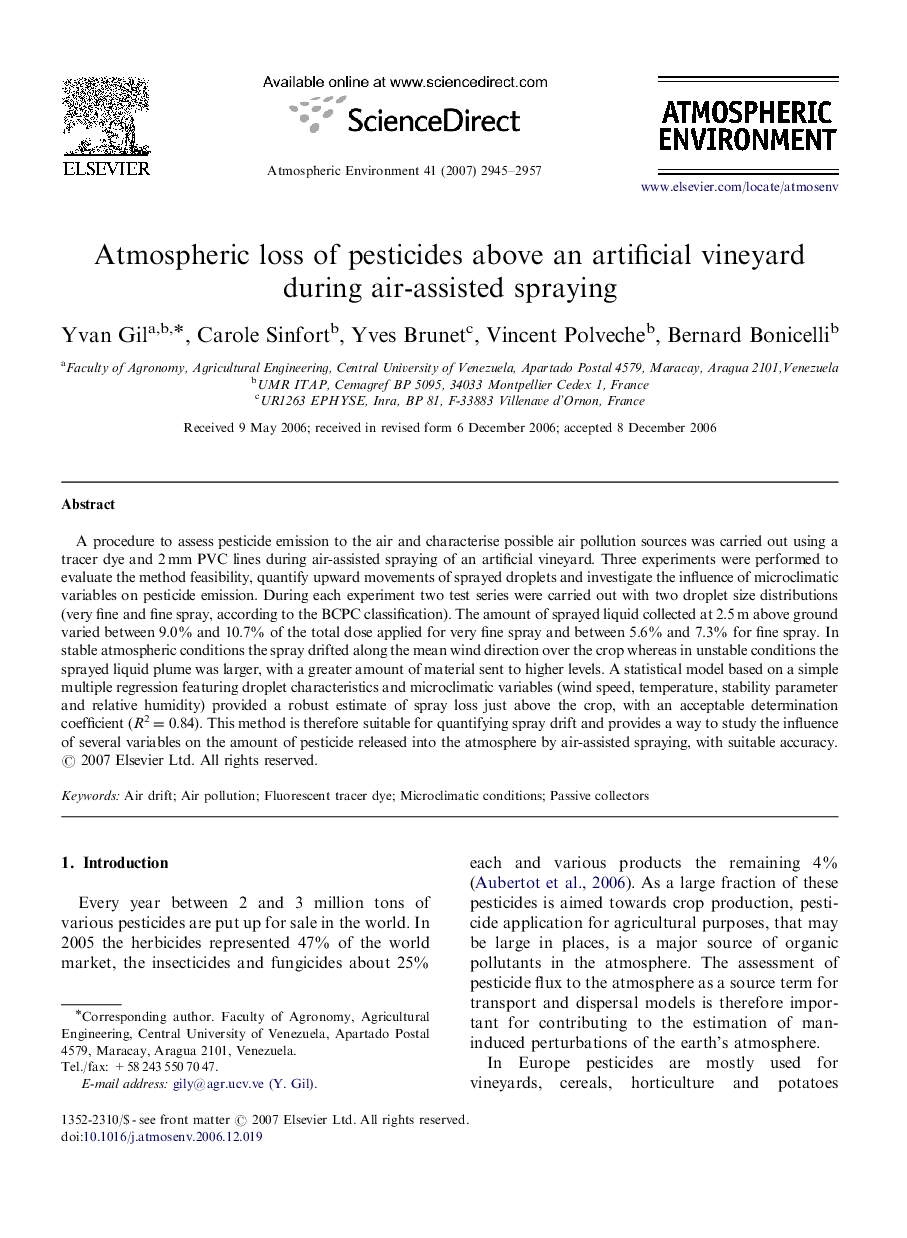| Article ID | Journal | Published Year | Pages | File Type |
|---|---|---|---|---|
| 4443338 | Atmospheric Environment | 2007 | 13 Pages |
A procedure to assess pesticide emission to the air and characterise possible air pollution sources was carried out using a tracer dye and 2 mm PVC lines during air-assisted spraying of an artificial vineyard. Three experiments were performed to evaluate the method feasibility, quantify upward movements of sprayed droplets and investigate the influence of microclimatic variables on pesticide emission. During each experiment two test series were carried out with two droplet size distributions (very fine and fine spray, according to the BCPC classification). The amount of sprayed liquid collected at 2.5 m above ground varied between 9.0% and 10.7% of the total dose applied for very fine spray and between 5.6% and 7.3% for fine spray. In stable atmospheric conditions the spray drifted along the mean wind direction over the crop whereas in unstable conditions the sprayed liquid plume was larger, with a greater amount of material sent to higher levels. A statistical model based on a simple multiple regression featuring droplet characteristics and microclimatic variables (wind speed, temperature, stability parameter and relative humidity) provided a robust estimate of spray loss just above the crop, with an acceptable determination coefficient (R2=0.84). This method is therefore suitable for quantifying spray drift and provides a way to study the influence of several variables on the amount of pesticide released into the atmosphere by air-assisted spraying, with suitable accuracy.
